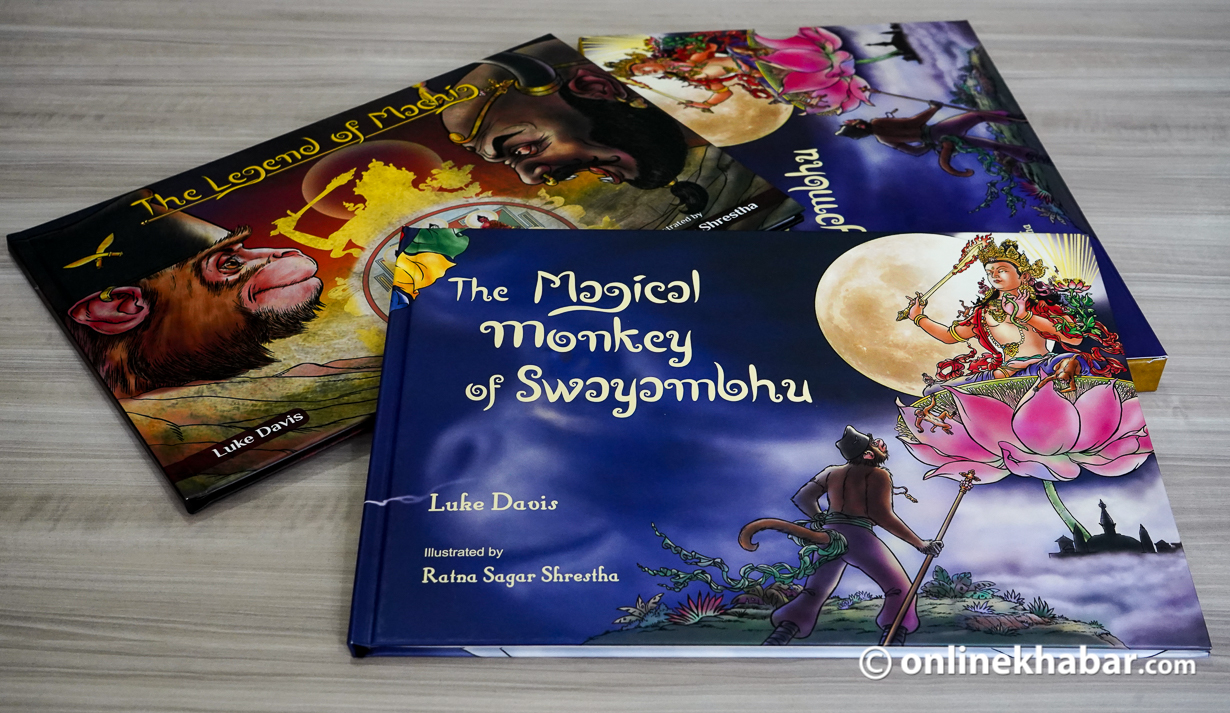The Kathmandu valley has always fascinated Australian writer Luke Davis. He came to the city with his parents when he was just one and has lived most of his life here. He has immersed himself in the culture, tradition and lifestyle of the valley so much so that he lives here. In short, the valley has become his life.
One place, in particular, has touched him more than others. It has inspired him, driven him and captivated him. And, to pay homage to it, he has written two children’s books dedicated to the Swayambhu stupa and the monkeys that reside on its hill.
“My books are love letters to Nepal, its teachers, and its teachings,” says Davis. “I’ve been captivated by the Swayambhu stupa and its monkeys for a very long time and this is a small tribute to the place that I call home. I hope children read the books and through them get introduced to the city.”
The first book

Luke Davis wrote the first book in 2013. Inspired by the stories he heard about Nepal during his stay in Kathmandu, he decided to tell a story centred around monkeys around the Swayambhu stupa. He says, through his book, he wanted to give his monkeys powers and show them in a different light.
“When you visit the Swayambhu stupa, you will find hundreds of playful monkeys. They are like the unofficial greeters for tourists and are occasionally happy to pose for a photo in exchange for some food. So, I felt why not write a story about them with the oldest stupa in the world at its centre,” adds Davis.
The first book takes you on a journey with Machig, the protagonist of the story. He goes on a journey to find healing food for his sick mother. During the journey, he learns a lot about life. He learns values from the people he meets and also learns the importance of interconnection and unity.
“The food is a metaphor for the values he learns. Through those values, he becomes a compassionate person. It’s a coming of age story for Machig,” he says.
This, he hopes, can inspire people of all ages. He wants people to find strength they never knew they had.
“I hope people can find the light within,” he says.
The second book

In the second book, he goes back to the formation of the Kathmandu valley. Taking inspiration from the Swayambhu Puran, Davis dives into how Kathmandu came to be. But, he used his imagination to turn myth into fiction.
The book titled Legend of Machig is a cliched story about the victory of good over evil but told in a unique manner. The story is narrated by Machig’s mother who talks about how the city was saved from evil by Machig (one from the past).
“This is a story that has been told in many forms since the dawn of time,” says Davis.
But, it is an interesting story nonetheless. Krodha, the antagonist, is full of hate and jealousy. He wants the power of the Swayambhu stupa all to himself. But, Machig and Manjushree devise a plan to stop that from happening.
It is a story that can teach kids about redemption. It spreads the message that with time and patience, even people with bad intentions can change. It talks about forgiveness and empathy and that love can help people conquer all evil.
“Through my stories, I want to show that everything is interconnected. Our planet. Our lives. The universe… that we are always better together than apart and anything is possible when we work together with compassion,” he says.
Art and attraction

The books also have illustrations from Ratna Sagar Shrestha, an artist trained in traditional and contemporary art. Davis says that it was hard for him to find the right person to do the illustration for the book.
“I wanted the book to be a merger between traditional art and a comic and Ratna, who did illustrations for The Himalayan Times understood what I wanted,” says Davis.
The art is fluid and comedic and has elements of traditional Tibetan and Newa art. I am sure it is sure to captive young children.
Both books are easy reads. The first, The Magical Monkey of Swayambhu, is more like a long poem with a lot of prose while the other is a smooth story that is sure to make children curious about the legends of the Kathmandu valley including the Swayambhu stupa.





















